Hojocho : a nostalgic post-town with temples, shrines, and merchant houses
Hojocho is the last stop of the local train line “Hojo railway”, that runs through a beautiful rural landscape. The town flourished as a gate town for temples and shrines such as Sumiyoshi Shrine and Sagamiji Temple, which were built about 1,300 years ago. Along the old road, there are many magnificent merchant houses that are reminiscent of the prosperity of the time.
The Starting point is Hojomachi station, on the Hojo Railway Line.
Hojomachi station is both the starting point and terminal stop of the Hojo railway.
You can oftens spot a cute Hojo railway line single-car train parked at the station’s platform. At times, one can even see two of them lined side-by side.
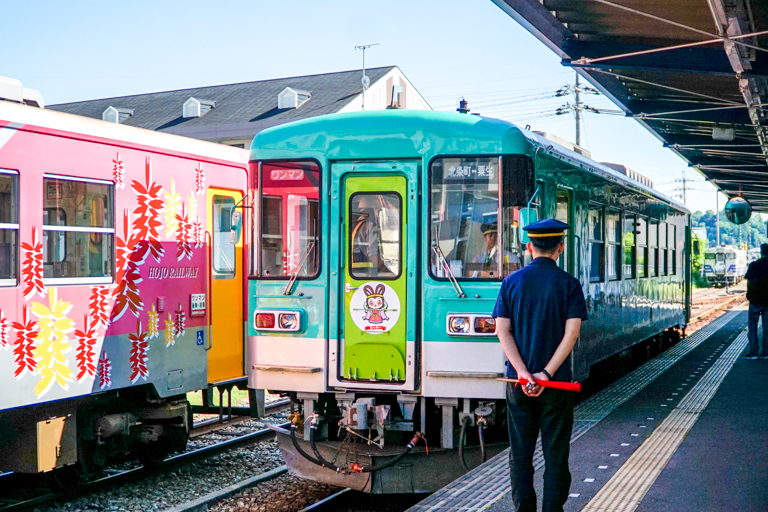
Be sure to check out various goods related to Hojo railway sold at the station building too!
Learn more about the sightseeing spots scattered along the Hojo railway line from the below link!
https://www.hyogo-tourism.jp/world/feature/11
Sagamiji Temple and its beautiful multi-colored pagoda
Walking for about 10 minutes, going through the rows of merchant houses that retain the atmosphere of the past, you will come across a fabulous tower gate. Sagamiji Temple is said to have been built by monk Gyoki, under the order of the Emperor of Japan in the year 754.
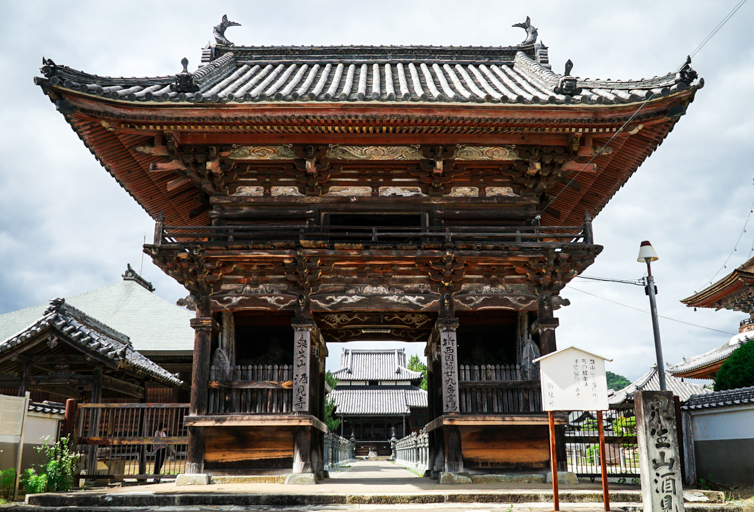
The pagoda, which was built in 1662, has been designated as National Important Cultural Property. It bears characteristics of traditional Japanese architecture, such as in its roof, which uses the same architectural style used for example in that of Kiyomizu Temple in Kyoto.
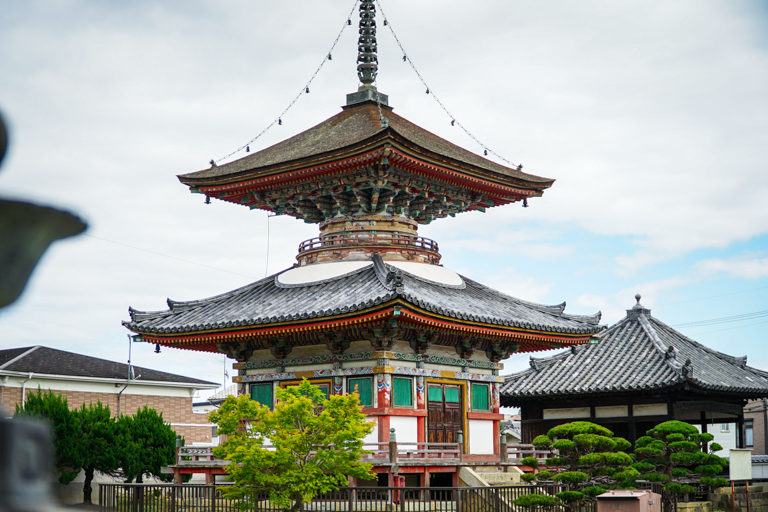
Even though it is beautiful from a distance, its beauty of decorative patterns painted in extreme colors and the architectural style of the tower itself are even more striking iwhen seen from up close. It looks really impressive when viewed from a slightly lower angle too! The rhythmically lined wood and painted patterns are fantastic, and it is easy to see why it is called "the most beautiful pagoda".
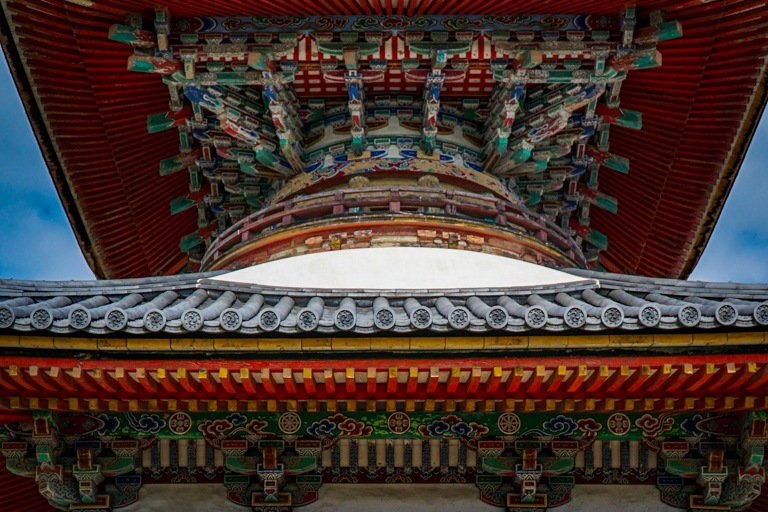
As you tour inside the temple, you will notice there are hollyhock crests everywhere on the temple grounds, such as on lanterns and roof tiles. The hollyhock crest is the family crest of the Tokugawa shoguns, who ruled Japan for about 260 years (1603-1868), something that all Japanese see in historical dramas and learn about in history class.
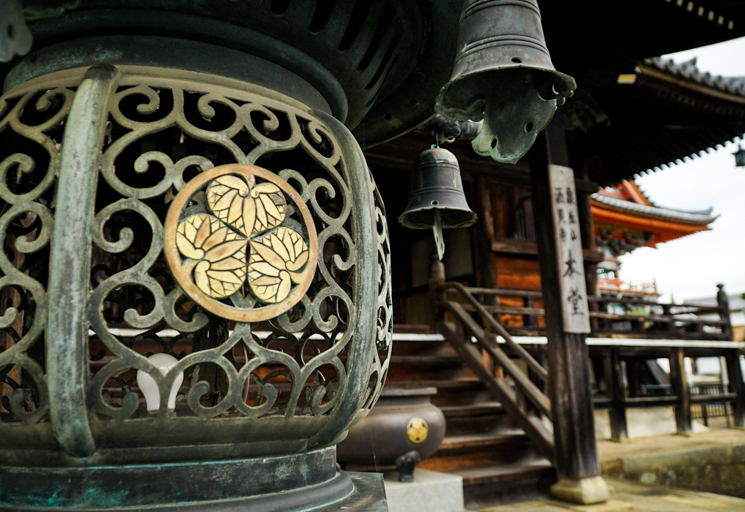
Sagamiji Temple has a history of having been protected by the third Tokugawa shogun, Iemitsu. It was the patronage of the Tokugawa family that led to the construction of such a magnificent building!
*Gyoki: Japanese Buddhist monk that was active from the late Asuka period (circa 593~710) to the early Nara period (714~794). He spread Buddhism among the people, engaged in social welfare and public projects, and was involved in the construction of many bridges and ponds. He also contributed to the construction of the Great Buddha of the Todaiji Temple in Nara.
Sumiyoshi Shrine and its 1,300 year of history
Sumiyoshi Shrine, which is located next to Sagamiji Temple, is also a place with a long history. After having been burnt down and rebuilt numerous times, the current building was built by the lord of Himeji Castle around 1600.
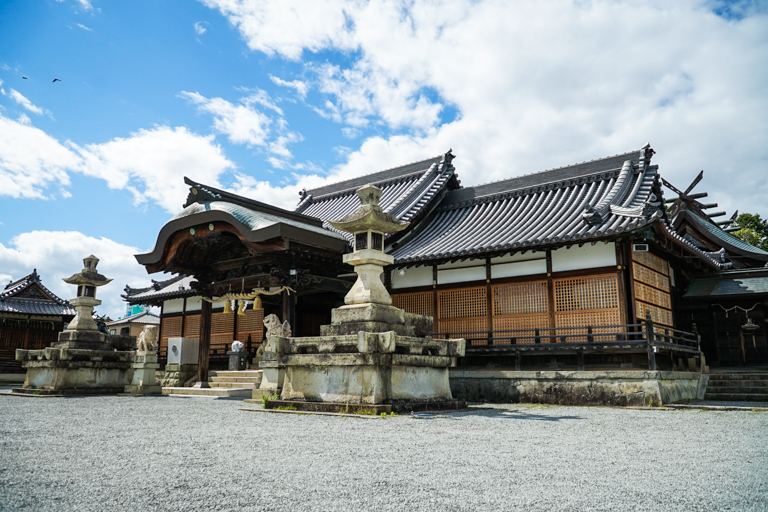
In front of the worship hall, there is a cute petting rabbit. It is said that petting this rabbit brings you blessings such as good health, fertility, and easy delivery.
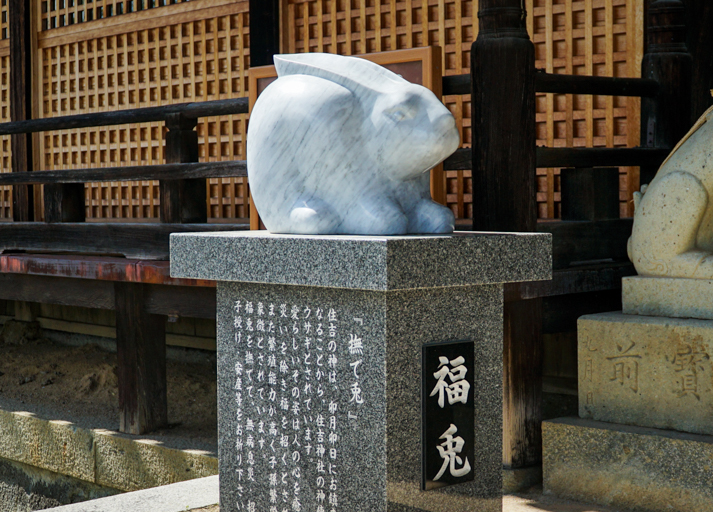
▲ The “Petting rabbit” that is said to bring many blessings
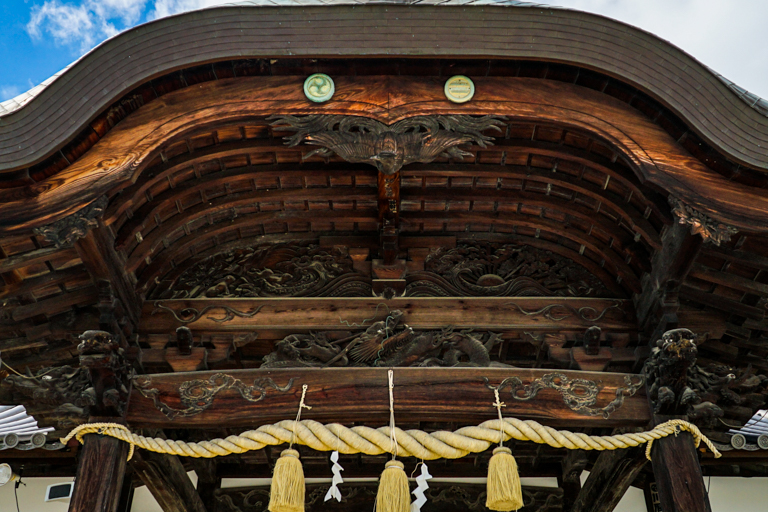
The ceiling part of the stately worship hall is overwhelmingly decorated with magnificent carvings of dragons and rabbits, the latter which are considered to be the messengers of the divinities of Sumiyoshi Shrine.
After admiring the fabulous architecture, be sure to go the back side of the building. Three divinities are venerated at the Sumiyoshi Shrine, and you can see three main shrines, each one dedicated to a different divinity. Three main shrines lined in a row is rather uncommon in Japanese architecture.
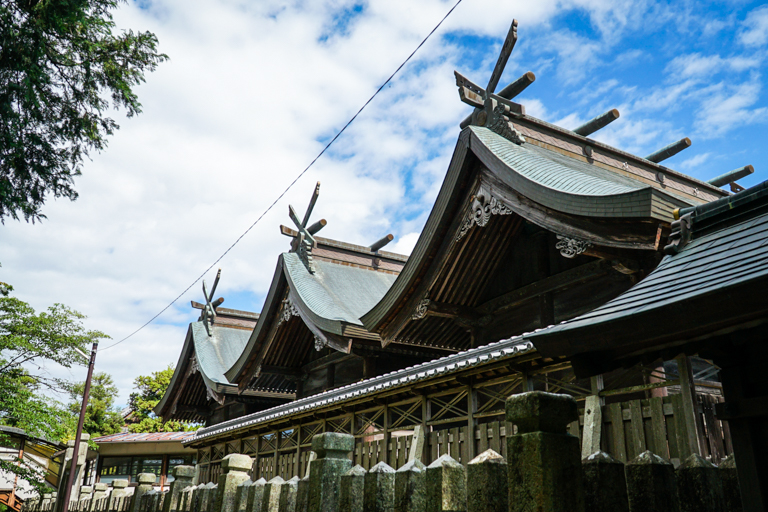
Related to the Sumiyoshi Shrine is the “Hojo Sekku festival” held every April. This festival, held on the first Saturday and Sunday of April, is one of the "Banshu’s Three Great Spring Festivals". It has many highlights such as beautiful portable shrines, many food stalls, and a dance dedication! If you have a chance, you should definitely go.

▲The lines of portable shrines of the "Hojo Sekku Festival"
Mysterious Stone Buddha group “Five Hundred Rakans”
The “Five Hundred Rakans” at Rakan Templem is only five minutes away on foot from Sagamiji Temple and Sumiyoshi Shrine. The word “Rakan” is an abbreviation of “Arakan”, which is the name given to the saints that were respected by many people and deemed worthy of receiving alms in Buddhism. The 500 disciples that gathered when Buddha died are called “Five Hundred Rakans”.
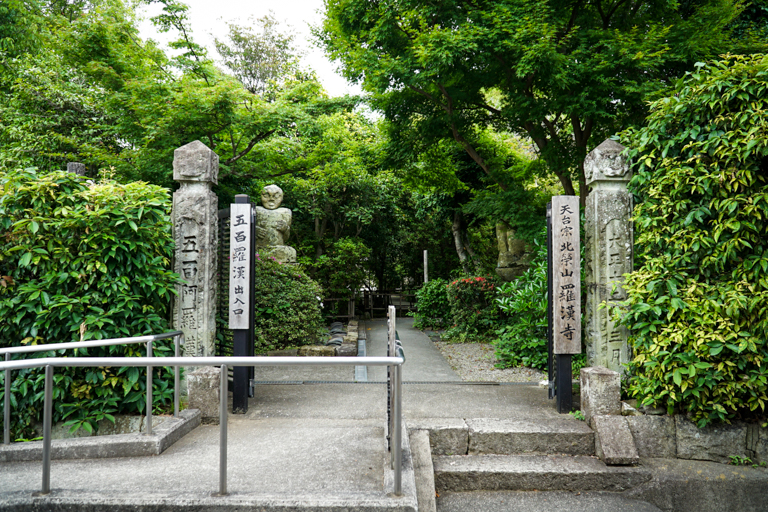
Even though there are Five Hundred Rakan statues in many places around Japan, it is not known when, by whom and for what purpose those of Hojocho were carved. Recently, after a municipal investigation, it was revealed that many of them were created in the early Edo (1600~1867) period.
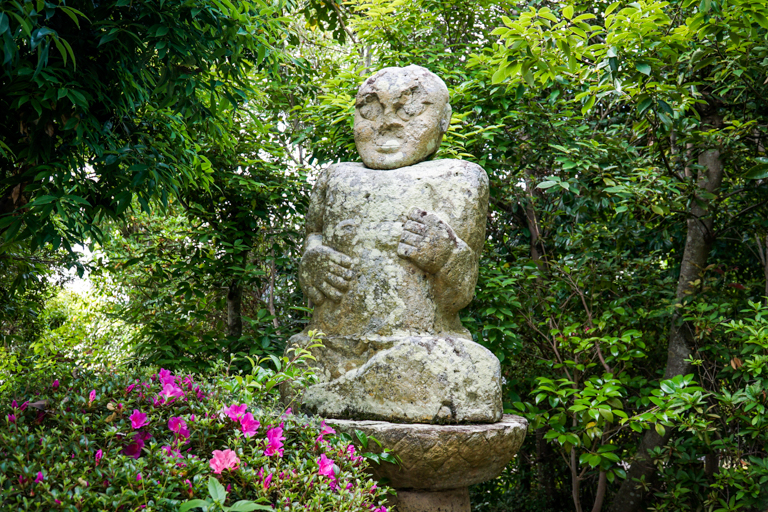
▲ The Rakan Temple is filled with lush greenery. There is a Rakan statue at the entrance too.
Going through the garden's beautifully moss-covered ground and emerging into the open, there are stone Buddhas everywhere!
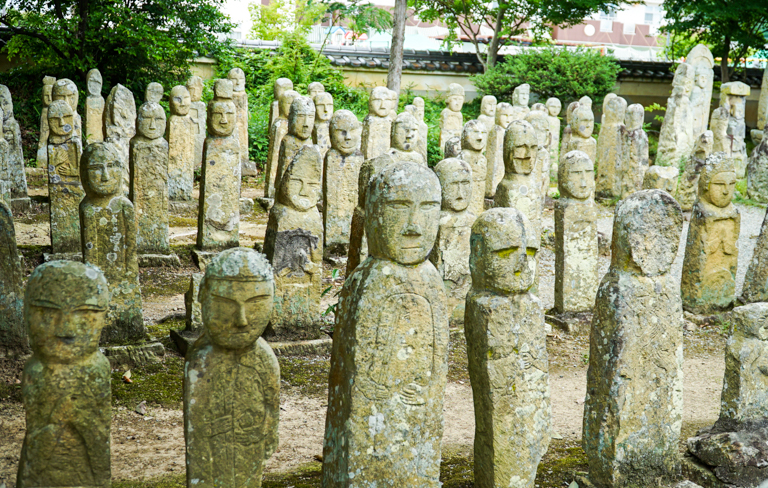
A group of stone statues standing right there looking into one direction. They were not created with the same outstanding skill as Jizo statues and stone statues in temples. To put it well, they are rustic; to say it badly, they were carved with poor technique.
However, for this very reason, their creator's intent to carve them no matter what is clearly conveyed to us, and the observer\ is left wondering who and for what purpose carved those statues.
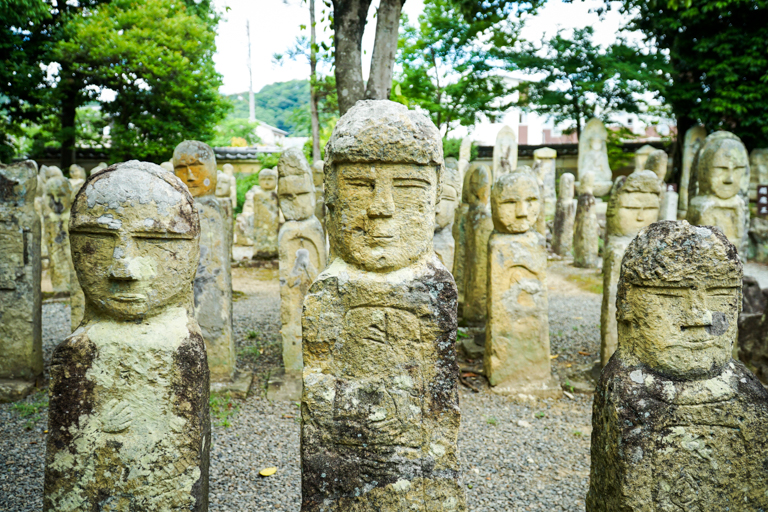
In the area of Five Hundred Rakan, a path without a single leaf is maintained. This allows visitors to see each of them up close, and this is another charm of the place. Some are smiling with a graceful expression; others have their mouth tightly closed… You will want to take your time to looking at the expressive faces of those Rakan statues, as they seem to reflect the intent and thoughts of their creator.
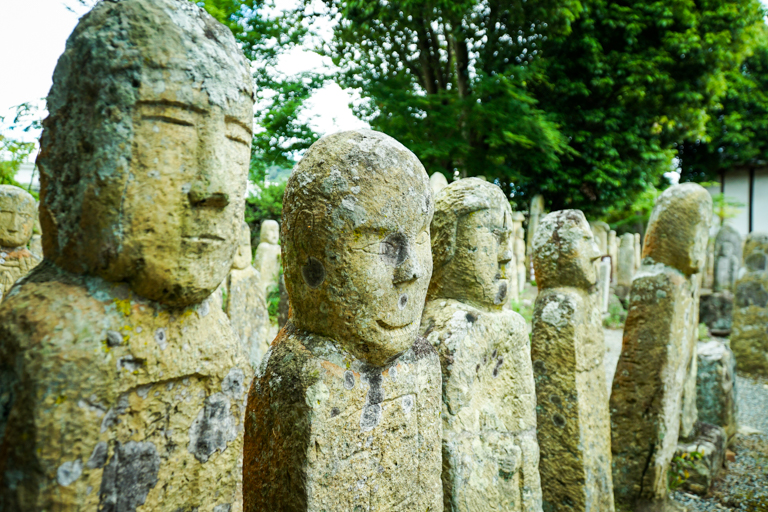
▲Rakan statues with different facial expressions
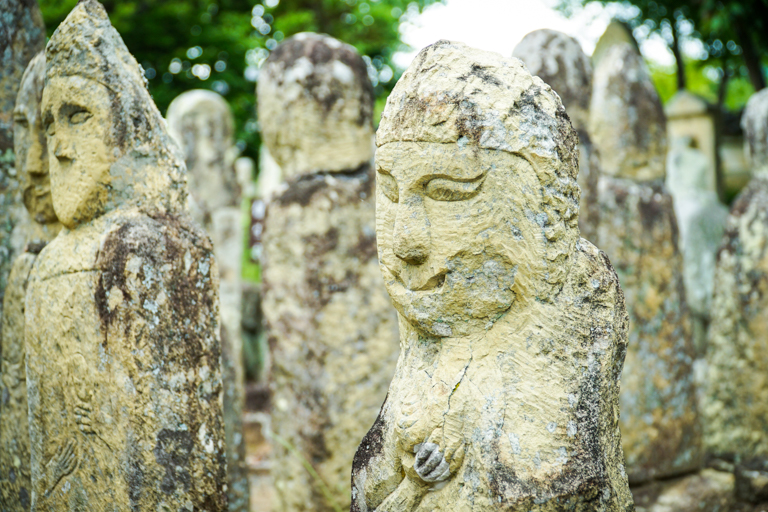
▲There are ones with nice smiles too
“Please take your time to look at Rakans. Each has a different facial expression.” says Mrs. Yamada, who manages the Rakan Temple with her husband.
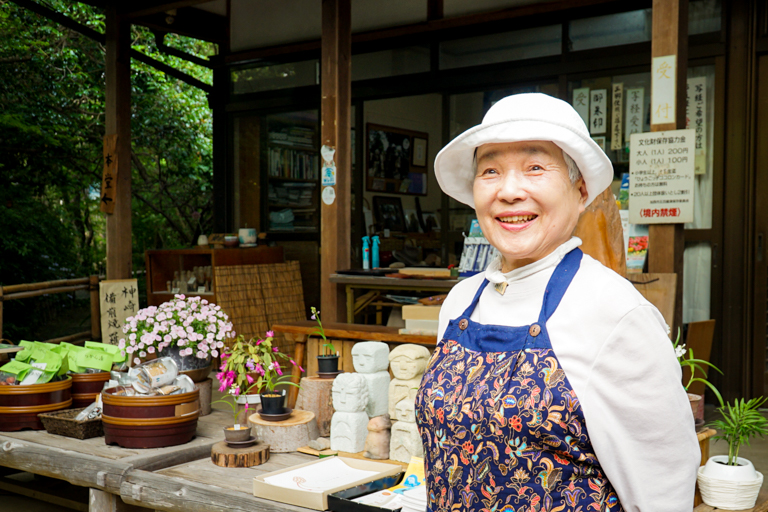
▲Mrs. Yamada, who also guides visitors from abroad
Mrs. Yamada says she cleans the grounds of the temple and take care of the garden every day. “I keep the garden in a natural state so the visitors coming here can relax. Please spend your time not only visiting the Five Hundred Rakans but also looking at the art in the temple grounds and admire the greenery at the porch” she says.
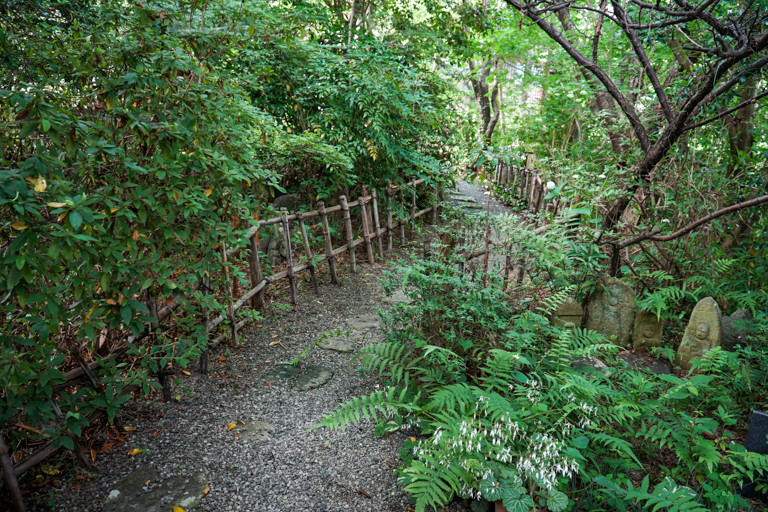
▲Garden where you can enjoy various flowers and greenery in each season
Have a relaxing tea time at Mizuta’s house
The “Mizuta Family Residence”, located in Yokoo Street, is 15 minutes away further on foot. It is a building that has been preserved for over 120 years in its original form, and is registered as National Tangible Cultural Property.
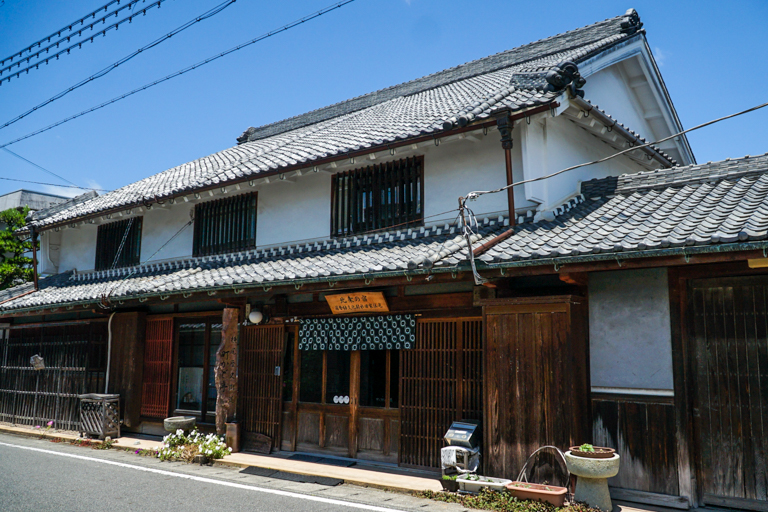
▲The Mizuta Family Residence shows how merchant houses used to be built
Mr. Mizuta, the owner of this house, works as a guide for Hojocho. Therefore, his house is filled with pamphlets and explanatory materials. This house is also used as a café, the “Machikado-tei”, every Tuesday and Wednesday, from 10:00 am to 15:00 pm. You will be able to get a lot of information about Hojocho with a cup of delicious coffee.
“We have preserved the earthen floors and other features as they were in the past because we want visitors to actually experience the old merchant’s house. We sometimes have to do DIY because if we ordered to contractors, they might change the house to a modern style”.
What will surprise you when visiting Mizuta Family Residence is the abundance of resources that tell the history of Hojocho. Inside the 5 storehouses at the back of the detached house, there is a self-made museum, including agricultural equipment, gorgeous Hina Dolls, and the owner’s collection of wooden swords.
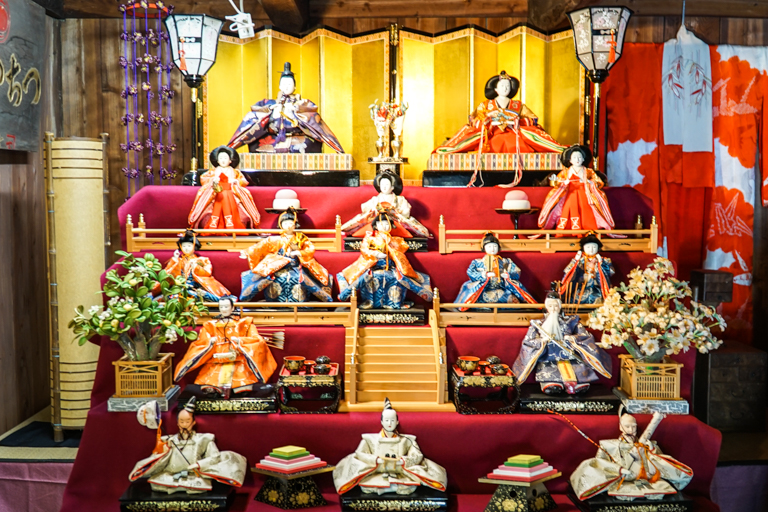
▲Hina Dolls that are displayed in March to wish for the growth of girls
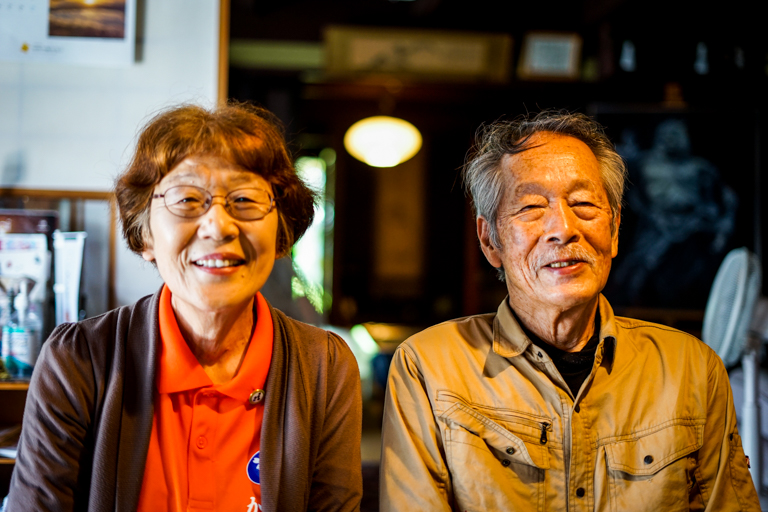
▲Mrs. and Mr. Mizuta
“Even though Hojocho is not a big town, it has a very deep history as a poset-town and a gate-town. I hope many people will learn about its history by actually looking and touching things from the past, and also by staying in this house after renovations are finished” say Mrs. and Mr. Mizuta.
I was so absorbed in their warm personalities and the wonderful resources that evening came without my realising it.
What I felt walking around Hojocho was the warmth of its people. Everywhere I went, people kindly and politely told us about the history of the town, and I really enjoyed interacting with such warm people. Perhaps the town’s history of flourishing as an post-town and a gate-town is another reason for its warm welcome to travelers.
Sagamiji Temple
Address: 1319 Hojo Hojo-chou Kasai-city Hyogo-prefecture 675-2312〒675-2312(Google map)
Available time: Open all year
Closing days: None
English website: https://kanko-kasai.com/spot/culture/sagamiji/
Sumiyoshi Shrine
Address: 1318 Hojo Hojo-chou Kasai-city Hyogo-prefecture 675-2312(Google map)
Available time: All year
Closing days: None
English website:https://kanko-kasai.com/spot/culture/sumiyoshi/
Gohyakurakan (Rakanji)
Address: 1293 Hojo-chou Kasai-city Hyogo-prefecture 675-2312(Google map)
Available time: 9:00〜17:00
Closing days: None
English website: https://kanko-kasai.com/spot/culture/gohyakurakan/
Mizuta Family Residence
Address: 121 Yokoo Hojo-chou Kasai-city Hyogo-prefecture 675-2311(Google map)
Available time: 10:00〜15:00
Business days: Tuesday and Wednesday
English website: https://bunka.nii.ac.jp/heritages/detail/211513



